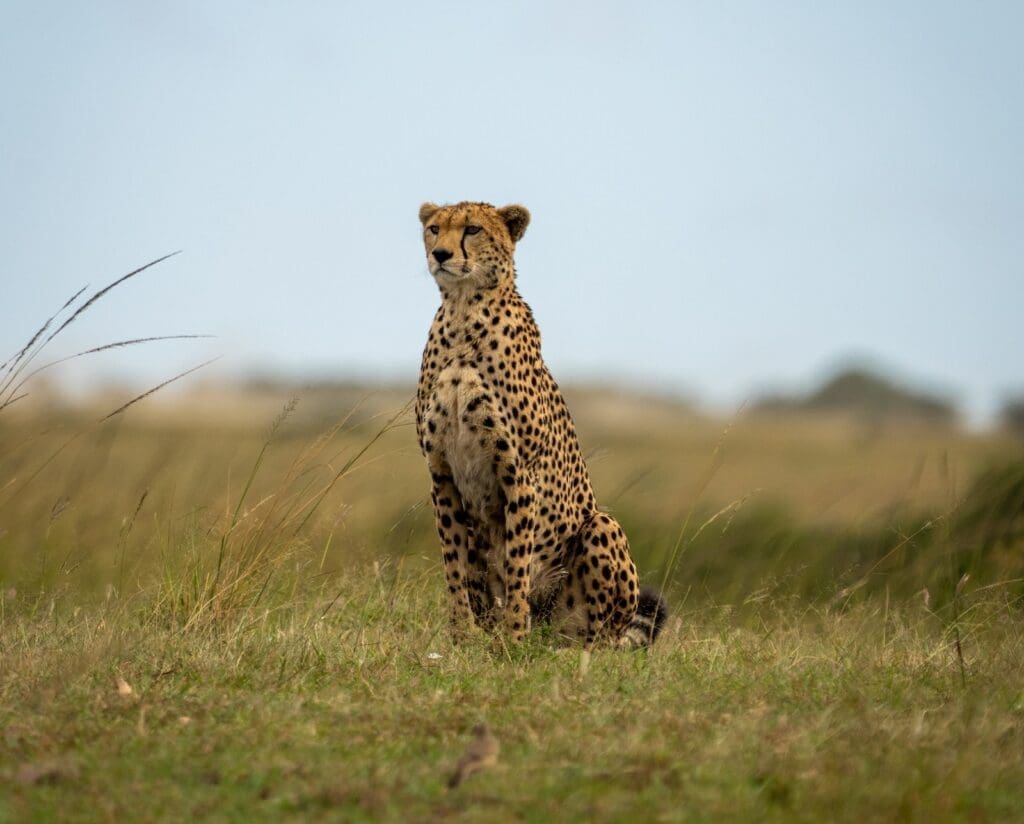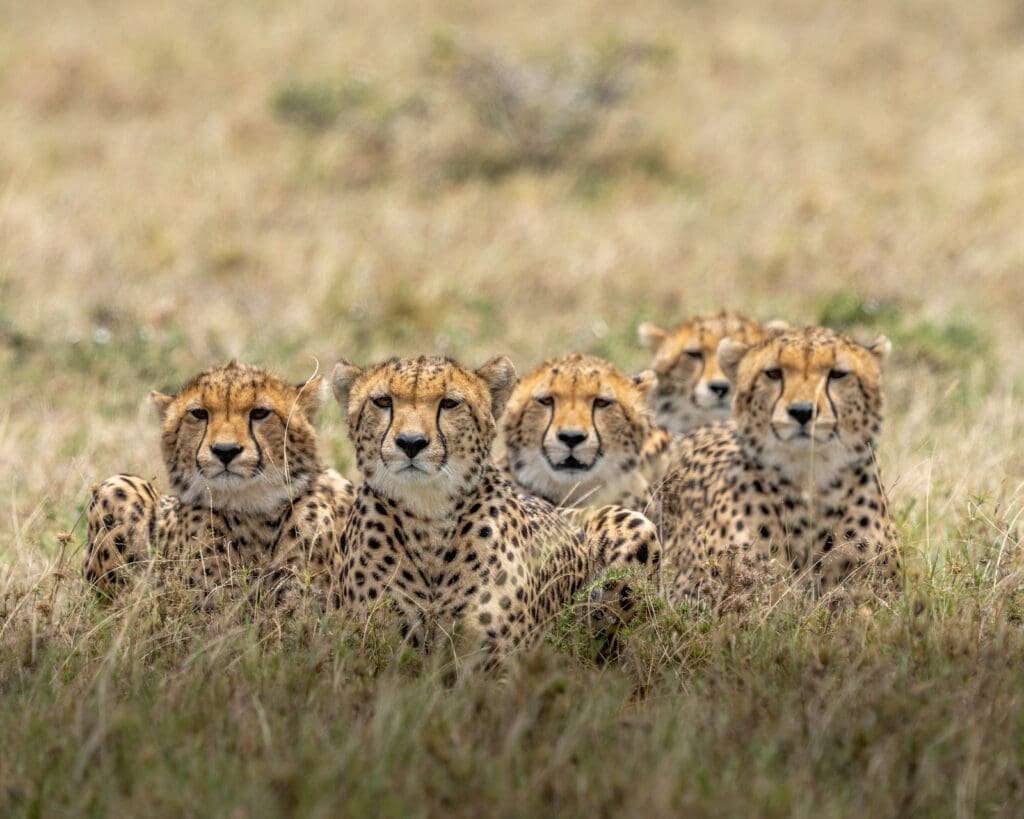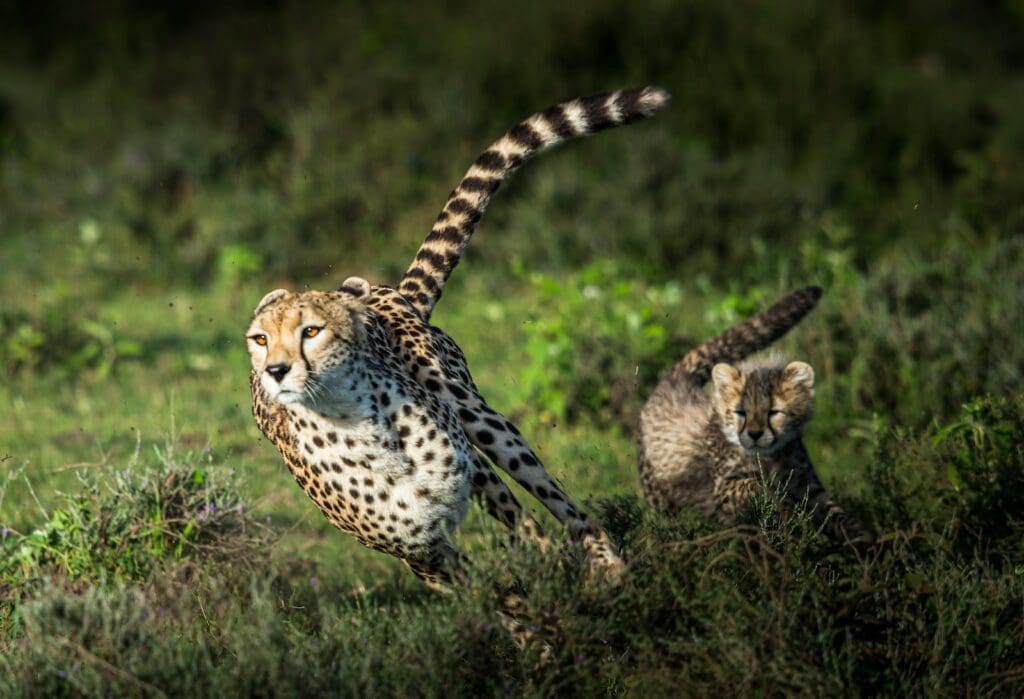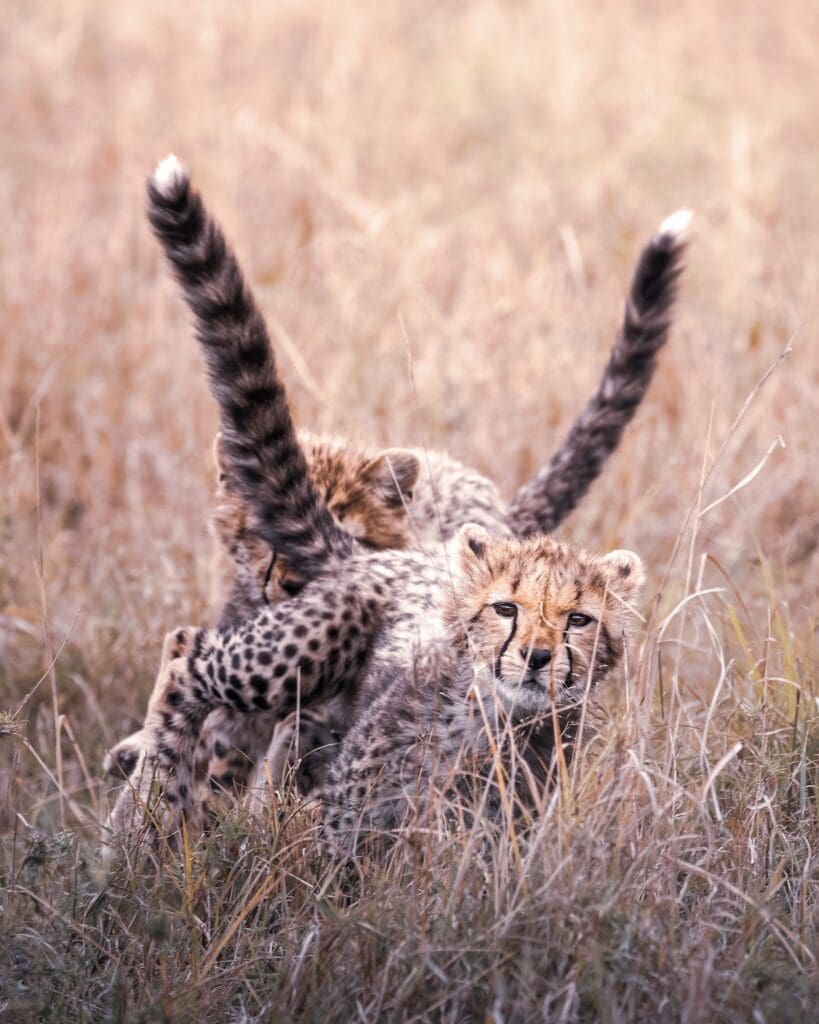
Everything You Need to Know
The cheetah is a remarkable big cat that is known for its incredible speed and agility. These wild cats are native to sub-Saharan Africa and can be found in open savannas and forests. While they may be best known for their impressive hunting abilities, there is much more to learn about these fascinating animals. Here are 10 facts about the cheetah that you may not have known.
- Cheetahs are the fastest land animals in the world, capable of reaching speeds of up to 70 miles per hour.
- Unlike other big cats, cheetahs are not built for strength and stamina. Instead, they rely on their speed and agility to catch their prey.
- Cheetahs have a unique hunting style that involves stalking their prey and then sprinting after them in short bursts. This allows them to conserve energy while still catching their prey.
- Cheetahs have distinctive spots on their fur that help to camouflage them in their natural habitat.
- These big cats are social animals that typically live in small groups or pairs.
- Cheetahs are excellent mothers and will fiercely protect their cubs from predators.
- Unfortunately, cheetahs are considered a vulnerable species due to habitat loss and poaching.
- Conservation efforts are underway to protect these animals and ensure their survival in the wild.
- Cheetahs have been a popular subject in art and literature for centuries, with depictions of the animals dating back to ancient Egypt.
- Despite their impressive speed and hunting abilities, cheetahs are still at risk of predation from other animals, such as lions and hyenas.
Physical Attributes
Cheetahs are known for their unique physical attributes that make them one of the most fascinating animals in the world. In this section, we will explore the body and coat, speed and agility, and unique features of cheetahs.
Body and Coat
Cheetahs have a slender body and long legs that help them run at incredible speeds. They are covered in a spotted coat that is tan or yellow in color, with black spots that vary in size and shape. The spots on their coat help them blend in with their surroundings and avoid detection by predators.
Their fur is also very short and coarse, which helps them stay cool in the hot African climate. Cheetahs have a white underbelly and a distinctive black tear mark that runs from the corner of their eyes down to their mouth.
Speed and Agility
Cheetahs are the fastest land animals in the world, capable of running at speeds of up to 70 miles per hour. They can accelerate from 0 to 60 miles per hour in just a few seconds, thanks to their powerful legs and spine.
Their long tail helps them maintain balance while running at high speeds, and their claws are semi-retractable, which allows them to grip the ground and change direction quickly. Cheetahs also have excellent eyesight, which helps them spot prey from a distance and track their movements.
Unique Features
One of the most unique features of cheetahs is their spotted coat, which is different from the striped coat of other big cats. They also have a small head and ears, which help reduce wind resistance while running.
Cheetahs have a relatively small size compared to other big cats, with adult cheetahs weighing between 75 and 125 pounds. They have a long body that measures between 40 and 60 inches in length, and their tail can add another 24 to 32 inches to their overall length.
In conclusion, cheetahs are remarkable animals with unique physical attributes that make them one of the most fascinating creatures on earth. Their body and coat, speed and agility, and unique features all contribute to their incredible abilities and make them a true wonder of the animal kingdom.

Habitat and Distribution
Cheetahs are found in Africa and Iran. They are known to inhabit a wide range of habitats including shrublands, grasslands, savannahs, and temperate to hot deserts. They prefer open grasslands, where they can run at high speeds to catch their prey.
African Cheetahs
In Africa, cheetahs are found in sub-Saharan Africa, where they roam open, grassy savannah plains and open forests. They are known to live in countries such as Botswana, Namibia, Zimbabwe, and South Africa. They are the most widely distributed of all African cats.
Cheetahs in Africa are threatened by habitat loss, poaching, and conflicts with humans and other predators. They are also susceptible to diseases such as feline infectious peritonitis and canine distemper virus.
Asian Cheetahs
In Iran, cheetahs are found in the central deserts and steppes. They are also known as the Asiatic cheetah. There are only a few dozen Asiatic cheetahs remaining in the wild, making them one of the rarest big cats in the world.
The Asiatic cheetah is threatened by habitat loss, poaching, and conflicts with humans and other predators. They are also susceptible to diseases such as canine distemper virus and tuberculosis.
Overall, cheetahs have a wide distribution, but their populations are declining due to various threats. Conservation efforts are underway to protect these magnificent animals and their habitats.
Behavior and Lifestyle
Cheetahs are fascinating animals with unique behavior and lifestyle. Here are some interesting facts about their hunting and diet, social structure, and reproduction and breeding.
Hunting and Diet
As carnivores, cheetahs feed mainly on small to medium-sized prey such as impalas, gazelles, and hares. They use their slender, muscular bodies and incredible speed to chase down their prey. Cheetahs are known for their incredible top speed, which can reach up to 70 miles per hour (113 kilometers per hour) in short bursts. However, they cannot sustain this speed for long and need to rest and recover after a chase.
Social Structure
Cheetahs are generally solitary animals, except for mothers with young cubs. However, male cheetahs may form coalitions with their brothers or other males for protection and to increase their chances of mating with females. These coalitions may last for their entire lives.
Reproduction and Breeding
Female cheetahs give birth to litters of one to six cubs, with an average of three to four. Cubs are born blind and helpless, and their mother cares for them until they are old enough to hunt on their own. Female cheetahs are generally shy and avoid mating with males, but when they do mate, they can purr and roar like other big cats.
Overall, cheetahs have a unique lifestyle and behavior that allows them to balance their energy needs with their hunting and social activities.

Conservation Status and Threats
Endangered Status
The cheetah (Acinonyx jubatus) is a threatened mammal species that is listed as vulnerable on the IUCN Red List. The population of cheetahs has declined by approximately 30% over the past three generations, and the current population is estimated to be around 7,100 individuals. The cheetah is also listed in Appendix I of the Convention on International Trade in Endangered Species of Wild Fauna and Flora (CITES), which prohibits international trade in live animals or their parts.
Threats and Challenges
The cheetah faces several threats that are contributing to its decline. The loss of habitat due to human activities such as agriculture, urbanization, and mining is one of the biggest threats to the species. As human development encroaches on their habitat, cheetahs now commonly live on the edge of farmland, leading to conflict with farmers who view them as a threat to their livestock.
Another major threat to the cheetah is the illegal wildlife trade. Cheetahs are often captured and sold as exotic pets or for their skin and other body parts. The trade in cheetahs is illegal under international law, but it continues to thrive due to high demand and lax enforcement in some countries.
In addition to habitat loss and illegal trade, cheetahs also face challenges such as genetic isolation and disease. The cheetah has a low genetic diversity, which makes it vulnerable to diseases and other environmental stressors. The species has also experienced several population bottlenecks in the past, which have further reduced its genetic diversity.
Overall, the conservation of the cheetah is a complex challenge that requires a multi-faceted approach. Efforts to protect the species must include measures to address habitat loss, illegal trade, and other threats, as well as initiatives to promote genetic diversity and improve the management of captive populations.
Cheetahs and Humans
Cheetahs and humans have had a complex relationship throughout history. In some cultures, cheetahs were revered as symbols of grace and speed, while in others, they were hunted for their fur. Today, cheetahs are facing many threats, including habitat loss, human-wildlife conflict, and poaching.
Cheetahs in Captivity
Cheetahs have been kept in captivity for centuries, both for their beauty and for their speed. In modern times, cheetahs are often kept in zoos and wildlife parks, where they can be observed by the public. However, keeping cheetahs in captivity can be challenging, as they require a lot of space to run and hunt. In addition, cheetahs can be difficult to breed in captivity, which makes conservation efforts more challenging.
Human-Wildlife Conflict
Human-wildlife conflict is a major threat to cheetahs in the wild. As human populations grow and expand into cheetah habitat, conflicts arise over resources such as water and grazing land. In addition, cheetahs sometimes prey on livestock, which can lead to retaliation by farmers. This conflict can have devastating consequences for cheetah populations, as they are often killed in retaliation.
To address this issue, conservationists are working to find ways to reduce conflict between humans and cheetahs. For example, some organizations are working with farmers to develop strategies to protect their livestock from predation, such as using guard dogs or building enclosures. Others are working to educate local communities about the importance of cheetahs and the role they play in the ecosystem.
Overall, the relationship between cheetahs and humans is complex and multifaceted. While cheetahs face many threats from human activities, there are also many dedicated conservationists working to protect them and ensure their survival in the wild.
Diet and Prey
Cheetahs are carnivorous animals, meaning they eat meat. They are opportunistic hunters and will eat whatever prey is available to them. However, their diet mainly consists of small to medium-sized ungulates such as antelopes, gazelles, and springboks. Cheetahs are diurnal hunters, meaning they hunt during the day, and they rely on their speed and agility to catch prey.
When hunting, cheetahs stalk their prey until they are within 70 to 100 meters (230 to 330 feet), and then they chase them down. Unlike other big cats, cheetahs do not ambush their prey or attack within springing distance. They rely on their speed to catch their prey, and they can run up to speeds of 70 miles per hour.
In addition to ungulates, cheetahs also eat smaller prey such as hares, rabbits, and birds. However, these smaller prey items are not their primary food source. Cheetahs do not scavenge often, and they prefer to eat fresh prey they recently killed. They only resort to scavenging and eating carrion when they are desperate for food.
Cheetahs are not picky eaters, and they will even eat prey that is much larger than themselves. They have been known to take down prey that weighs up to three times their body weight. However, they prefer to hunt smaller prey as it is easier to catch and requires less energy.
Overall, cheetahs are efficient hunters and have adapted to their environment to become one of the fastest land animals. Their diet mainly consists of small to medium-sized ungulates, but they will eat whatever prey is available to them.




